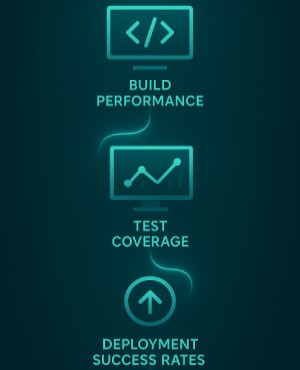Role of Real-Time Analytics in CI/CD
CI/CD focuses on automation and quick feedback. Developers push the code, run builds, conduct tests, and roll out deployments in a smooth cycle. However, teams might depend on outdated reports or manual checks to find problems unless they receive real-time feedback.
The growth of real-time analytics changes the process, allowing complete visibility of all pipeline steps. When a build slows down or test coverage drops, teams get notified right away. They can fix issues before they reach production.
Immediate Feedback and Its Benefits
Real-time analytics turn CI/CD into a data-driven system. This helps teams make better and faster decisions, even in a simple automation setup. Developers can quickly respond with immediate insights at every step and keep the pipeline running smoothly.

Build Performance
The main part of any CI/CD process is the build, but as the project expands, it tends to slow down. Real-time analytics allow teams to monitor build time, resource usage and cache performance at the moment. When a build is taking a long time due to an update in one of the dependencies, the system can indicate this to the developers immediately.
Test Coverage
Testing is where pipeline issues often show up first. In the absence of prompt feedback, unstable releases make it through. Real-time analytics provide teams with real time data about which tests frequently fail, which tests are taking too long to run, and whether the code coverage is decreasing. With this visibility, reliability is ensured and developers are more convinced with each build.
Deployment Success Rates
The last stage is the deployment and, and that is where real-time analytics shine. With the deployment success rates, rollback counts and error frequency, teams will be in a position to detect problems immediately they arise. In case the failure rates increase, automatic alerts can disable releases or roll back to ensure that the downtime is limited to the minimum and users remain unaffected.
Future of CI/CD
Imagine a system that alerts you when your test failure rate spikes on Monday mornings because the caches are stale. It then refreshes the caches automatically before the next build starts. This type of predictive intelligence is leading us toward self-healing pipelines, where problems are fixed on their own.